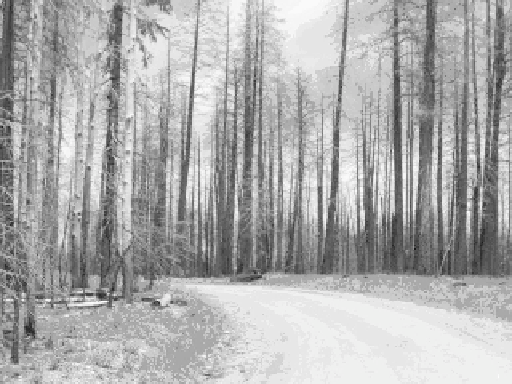Environmental Engineering Reference
In-Depth Information
FIGURE 10.4
Wildfire in overstocked pine forests in the southwest have long-lasting impacts to upland habitats. This condi-
tion is the result of natural wildfire suppression and other land management actions.
2-7 year wet-dry cycles associated with the El Niño-Southern Oscillation.
29-31
Primitive
understandings of the ecological role of natural fire in these ecosystems led the Forest
Service and other land managers to aggressively try to put out fires from about 1906 on.
In addition to fighting fires, the Forest Service deliberately encouraged overgrazing by
cattle and sheep to eliminate grass that carried the natural, cool, ground fires. Increasing
numbers of scientists recognized fire's important role by the 1960s, but such ideas were
heresy to many foresters and ranchers (see Chapter 11).
The reduction in fire frequency combined with overgrazing by cattle and sheep has
allowed woody plants to out-compete grasses (competition from grasses was as significant
as fire in keeping pine and juniper stands from becoming too dense and extensive).
Consequently, snakeweed (
Gutierrezia sarothrae
), creosote bush, prickly pear (
Opuntia
sp.),
cholla (
Opuntia
sp.), catclaw (
Acacia greggii
), mesquite, and piñon-juniper woodland have
invaded and replaced grasslands. This has changed the balance of natural ungulates that
graze and browse. Forested areas have been extensively degraded by the combination
of fire control and overgrazing. By eliminating frequent, cool, ground fires in forests,
land managers have allowed the fuel load to build up, thereby creating conditions for
destructive conflagrations and crown fires (Figure 10.4).
11,24,26,32-34
The control of natural fires has decreased their frequency, which has allowed enough
time for seedlings to develop into trees large enough to withstand the occasional light
surface fires. This has also led to the expansion of forests over grasslands.
10.2.4 Wound 4: Fragmentation of Wildlife Habitat
Causes: Wildlife habitat in the region has been fragmented by (1) highways, roads, and
vehicle ways; (2) dams, irrigation diversions, and dewatering of streams; (3) destruction
and conversion of natural habitat; and (4) other works of civilization, such as urban and
ranchette development.
35-37
Fragmentation has severed historic wildlife migration routes
and has potentially isolated wide-ranging species in nonviable habitat islands. Expanding
human populations and development continue to increase fragmentation (Figure 10.5).

Search WWH ::

Custom Search